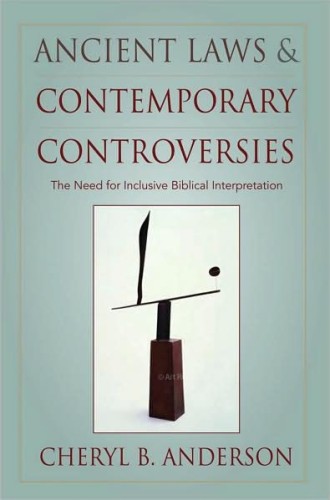A review of Ancient Laws and Contemporary Controversies
Some of the most difficult challenges confronting Christian commitments to an inclusive vision of human well-being involve the effective disclosure of well-established, taken-for-granted practices that unjustly subordinate, marginalize or exclude selected groups of people while reinforcing the interests of those in positions of power and privilege. Cheryl Anderson's project is to unmask practices of this kind, especially practices that have been justified by appeals to selected biblical texts.
She cites Audre Lorde's account of "mythical norms" in describing systems of thought that undergird problematic social practices—that is, ways of thinking that may be widely accepted but that nonetheless favor the privileged, in particular those who are white, male, heterosexual and financially secure.
Anderson examines a selected set of biblical resources that disclose the difficulty and urgency of fostering more inclusive processes of interpretation: ancient laws in the Pentateuch, narratives in the books of Ruth and Esther, synoptic accounts of Jesus' critical engagements with Pharisees, and undisputed Pauline epistles. She directs attention to laws in the Pentateuch that are offensive to many contemporary readers—in particular, laws that mandate subordinate roles for women within a patriarchal order, that sanction systems of slavery, that authorize the slaughter of defeated foes and that portray sexual contacts between males as perverse expressions of uncontrolled sexual desires.





